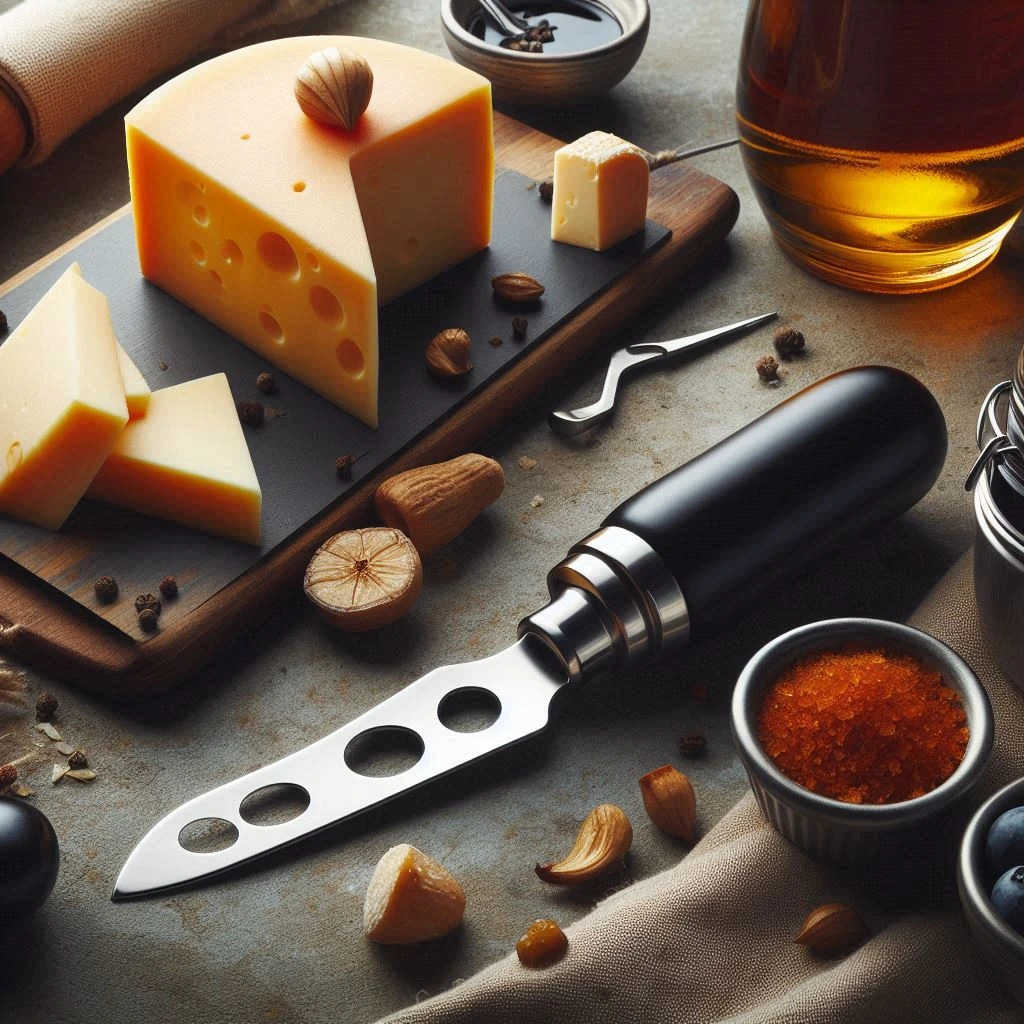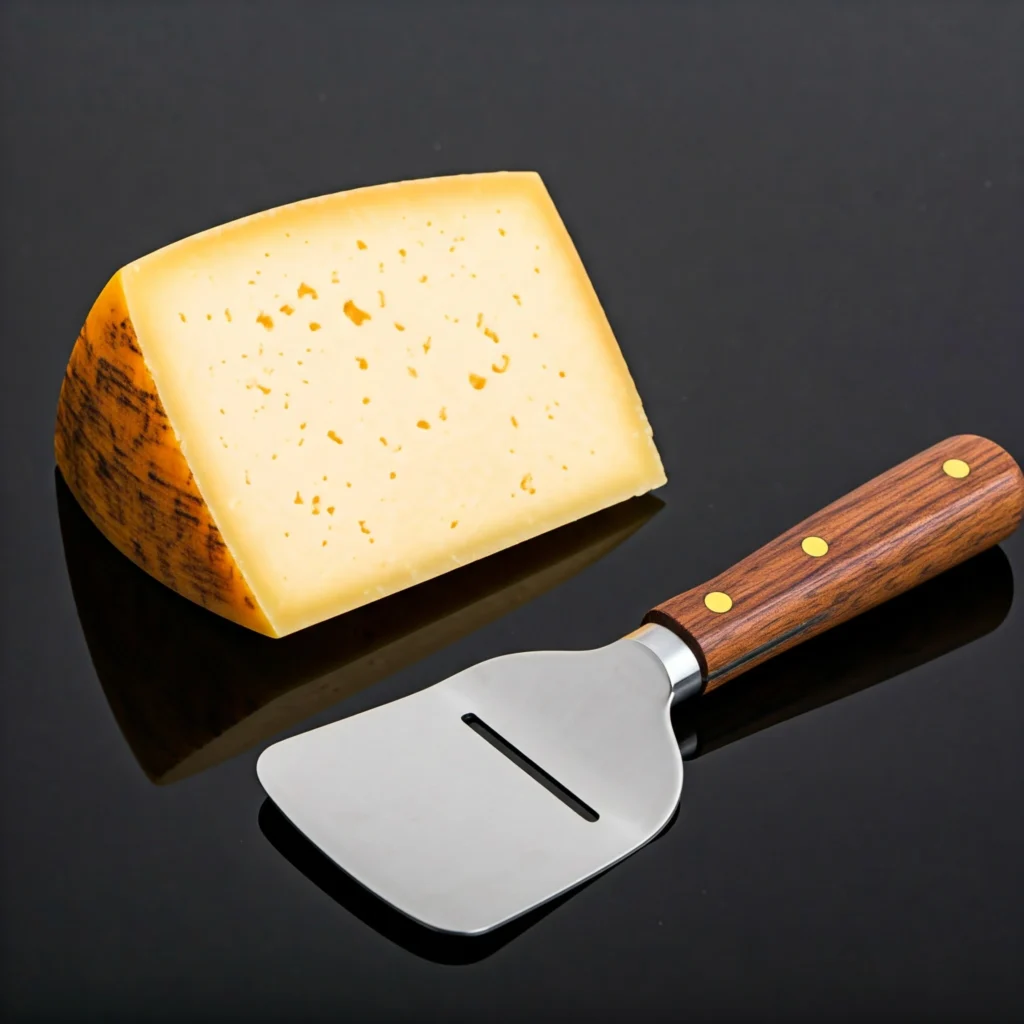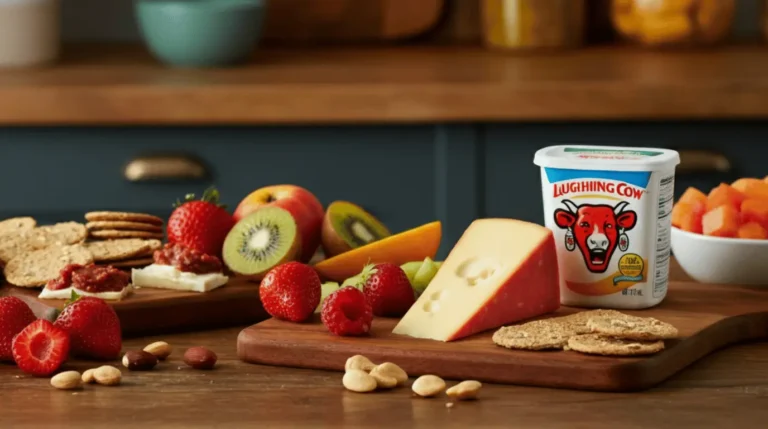Choosing the Best Cheese Knife: A Foodie’s Essential Guide
A perfectly crafted cheese platter is the ultimate crowd-pleaser, whether you’re hosting a dinner party or simply indulging in some personal culinary bliss. But have you noticed how the right tools make all the difference? Enter the cheese knife, an essential piece of a foodie’s toolkit that can transform your cheese game from amateur to expert.
From soft bries to crumbly cheddars and hard-aged parmesans, choosing the right cheese knife for the job isn’t just about precision—it’s about enhancing flavor, texture, and presentation. This guide will help you understand the different types of cheese knives, how to choose the right one, and even how to care for them so they last.
Get ready to unlock the door to a more delightful culinary experience with this deep dive into the world of cheese knives.
Table of Contents
A Guide to the World of Cheese Knives
Cheese knives have a long tradition rooted in both practicality and the art of entertaining. Early cheese tools were designed to help prevent soft cheeses from sticking and to slice hard cheeses without crumbling. Over time, cheese knives evolved into specialized tools, each with unique designs that make cutting and serving cheese effortless while maintaining its delicate structure.
But they’re not just functional—they elevate the presentation of your cheese platters, making every serving look (and feel) gourmet. Whether you’re a foodie, a home chef, or a kitchen enthusiast, understanding and using the right cheese knife can make a world of difference.
Understanding the Different Types of Cheese Knives
Each cheese has a personality of its own, and your cheese knife should complement it. Here’s a breakdown of the most important types of cheese knives and their best uses.
Soft Cheese Knives

Soft cheese knives, like those meant for bries, camemberts, and fresh mozzarellas, often feature perforated blades. The holes help prevent the sticky, creamy texture of soft cheese from clinging to the knife, allowing for a clean, smooth cut.
Pro tip: Choose a knife with a pronged tip to easily lift and serve the slices after cutting.
Hard Cheese Knives

Chisel-like hard cheese knives are equipped to handle aged cheeses like Parmesan, Gouda, or Pecorino. Their sturdy blades can break through the dense, crumbly structure of harder cheeses with ease.
Case Study: A home cook named Sarah shared that switching to a Parmesan cheese plane drastically improved her culinary experience, as it preserved the cheese’s crumbly texture for her pasta dishes.
Cheese Spreaders

Cheese spreaders are perfect for creamy cheeses like goat’s cheese, spreads, or pate. Their rounded edges allow you to scoop and spread without damaging crackers or bread. They’re also excellent for butter or dips, proving their versatility.
Cheese Planes

Cheese planes look a little like vegetable peelers and are perfect for creating thin, even slices of semi-hard cheeses, such as cheddar or Swiss. They also add flair to presentations with elegant slices.
Expert Opinion: “A good cheese knife is not just for cheese. It’s a versatile tool that every home cook should have in their kitchen,” highlights Chef Lee, a popular food blogger.
How to Choose the Right Cheese Knife for Your Needs
Selecting the right cheese knife requires understanding your preferences and the types of cheese you frequently enjoy. Here are the key factors to consider:
1. Cheese Texture
Soft, semi-soft, or hard—knowing the type of cheese you’ll mostly serve ensures you choose a knife tailored to that texture.
2. Cutting Style
Do you prefer precise slices for presentation, or are you all about rustic chunks? The cutting style influences the type of knife you should use.
3. Handle Comfort
A comfortable handle can make all the difference, especially when preparing for larger gatherings. Look for ergonomic designs that provide a secure grip.
4. Versatility
If budget or kitchen space is a concern, consider starting with a multi-purpose knife, like a soft cheese knife with a pronged tip or a good-quality cheese plane.
Case Study: One hostess shared how investing in a set of hard and soft cheese knives elevated her entertaining game by improving the ease of slicing and presentation.
Maintenance and Care Tips for Cheese Knives
Your cheese knives will last longer and perform better with proper care. Here’s how to keep them in pristine condition:
- Cleaning: Handwash your knives after use with warm, soapy water. Avoid soaking them too long, especially if they have wooden handles, as this may damage them.
- Storage: Use protective sheaths, a knife block, or a magnetic strip to store your knives, preventing scratches or damage to the blades.
- Sharpening: Keep your knives sharp to avoid damaging the cheese during cutting. Professional sharpening once or twice a year is recommended for best results.
Expert Insight: “Proper maintenance and care of your cheese knives ensure they perform at their best, making your food prep efficient and enjoyable,” advises Chef Patel, a professional chef with over 10 years of experience.
Creative Uses of Cheese Knives Beyond Cheese
Cheese knives are versatile tools that can handle much more than just cheese. Here are some creative ways to use them in your kitchen:
- Fruit Slicing: Use a soft cheese knife for juicy fruits like peaches and watermelons.
- Cake Cutting: A cheese spreader is great for cutting and serving soft cakes without damaging their delicate structure.
- Butter Spreading: Repurpose your cheese spreader for butter or cream cheese on fresh bread.
Case Study: A novice baker found that using a cheese spreader for cake frosting resulted in smoother, more polished desserts—a surprising win for her baking adventures!
Enhance Your Kitchen with the Right Tools
A well-curated collection of cheese knives doesn’t just elevate your cheese platters; it enhances your entire kitchen experience. From slicing the perfect wedge of Brie to crafting elegant fruit platters or frosting a cake, the proper tools make every culinary task smoother and more enjoyable.
Investing in a high-quality cheese knife isn’t just for the aesthetics—it’s for improving taste, texture, and functionality. Start experimenting with new tools, share your creative uses, and see how the right cheese knife can unlock a new world of kitchen possibilities.
Have your own cheese knife hacks or stories to share? We’d love to hear them! Comment below or tag us in your culinary creations.
Frequently Asked Questions (FAQ)
1. What type of cheese knife should I use for soft cheeses like Brie or Camembert?
For soft cheeses, a knife with a thin, narrow blade or one with holes is ideal. These designs help reduce sticking and allow for smooth, clean cuts.
2. Can I use a cheese knife for other kitchen tasks?
Absolutely! Cheese knives can be surprisingly versatile. Many are great for slicing fruits, spreading dips, or even frosting cakes, making them a valuable addition to your kitchen arsenal.
3. How do I care for my cheese knives?
To maintain your cheese knives, wash them by hand with warm soapy water and dry immediately to prevent rust. Avoid placing them in the dishwasher, as harsh detergents and heat can damage the blades.
4. Do I need more than one type of cheese knife?
While a basic cheese knife can handle most tasks, having a variety can enhance the experience, especially when serving a diverse selection of cheeses. Each knife is designed for specific textures and styles.
5. Where can I purchase high-quality cheese knives?
You can find high-quality cheese knives at specialty kitchen stores, online retailers, and even artisanal shops. Be sure to read reviews and look for trusted brands that prioritize durability and craftsmanship.
Still have questions? Feel free to reach out or leave a comment below—we’re here to help!







